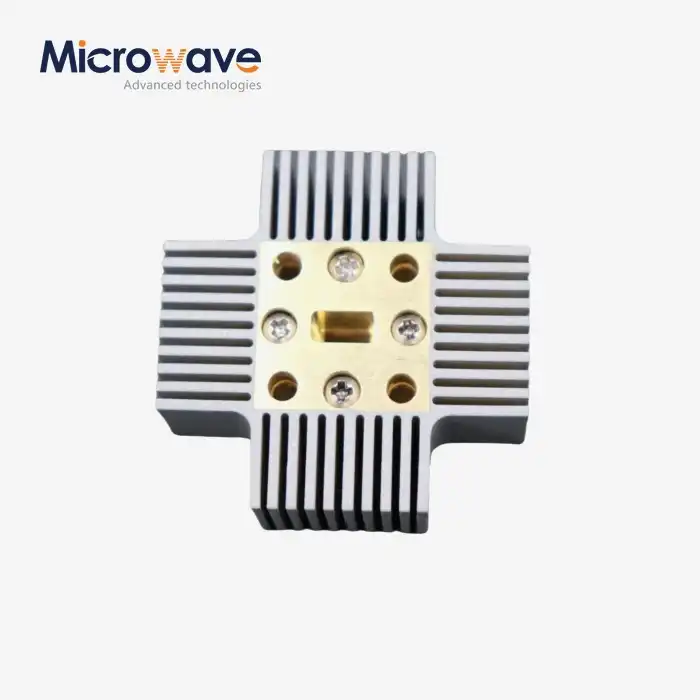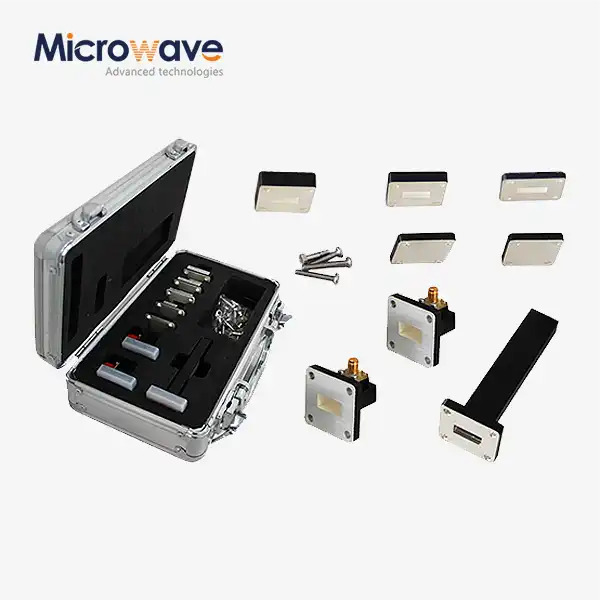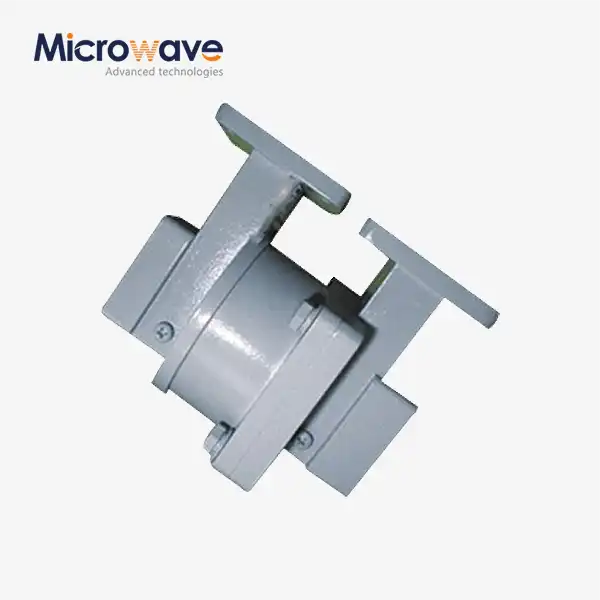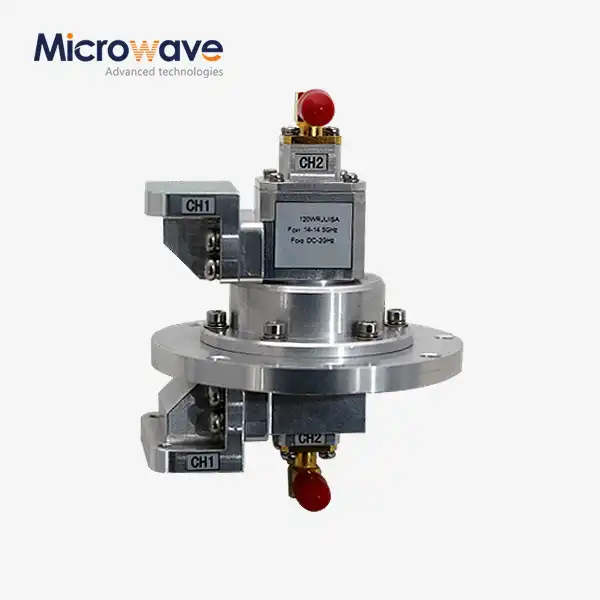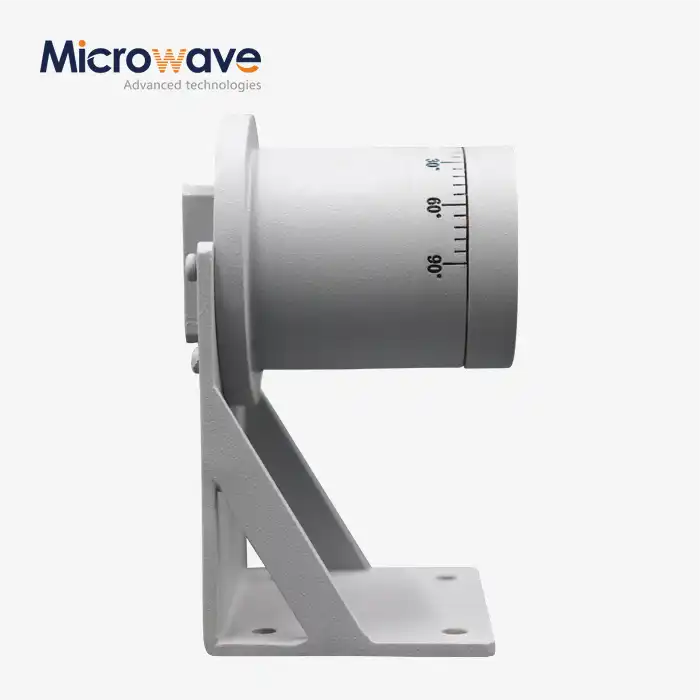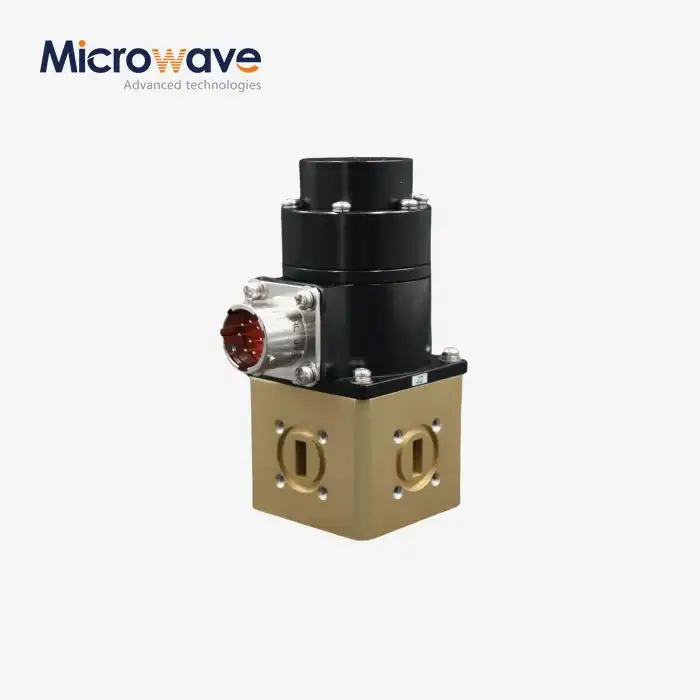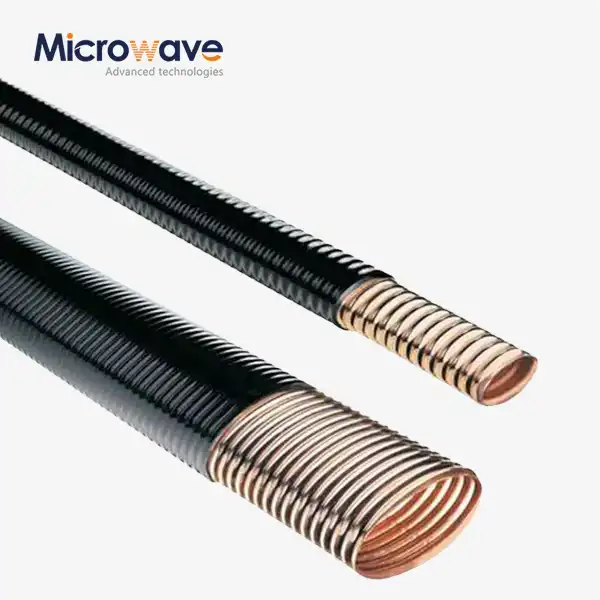What are the key components of a waveguide electric switch?
A waveguide electric switch is a critical component in microwave systems, designed to control the flow of electromagnetic waves with precision and efficiency. These sophisticated devices are essential in applications requiring reliable signal routing and transmission quality at high frequencies. The key components of a Waveguide Electric Switch typically include the waveguide housing, switching mechanism, actuation system, RF contacts, and control circuitry. Each element is precisely engineered to ensure optimal performance across diverse operating conditions, minimizing signal loss while maximizing isolation between ports. Understanding these components is crucial for engineers and technical professionals working with advanced microwave systems in telecommunications, defense, and aerospace applications.
Core Components of Waveguide Electric Switches
Waveguide Housing and Structure
The waveguide housing serves as the fundamental framework of a Waveguide Electric Switch, providing both structural integrity and electromagnetic performance. This critical component is typically manufactured from high-conductivity materials such as brass, aluminum, or copper, often with precise silver or gold plating to enhance electrical conductivity and reduce losses. The housing must be machined to exacting tolerances—often measured in microns—to maintain consistent impedance and minimize signal reflections throughout the transmission path. Advanced Microwave's Waveguide Electric Switch housings undergo rigorous precision manufacturing processes to achieve dimensional stability across varying environmental conditions. The internal geometry of the housing is meticulously designed to support the specific frequency band requirements, with dimensions precisely calculated to accommodate the desired wavelengths while preventing unwanted modes of propagation. Additionally, the housing incorporates specialized RF chokes and suppression features to minimize leakage and maintain high isolation between ports, especially crucial in high-power applications. The robust construction of these housings enables them to withstand mechanical stress, vibration, and thermal cycling commonly encountered in aerospace and defense applications, where reliability cannot be compromised. The housing also integrates mounting provisions and interfacing hardware compatible with standard waveguide flanges, ensuring seamless integration into existing microwave systems without introducing additional discontinuities or performance degradation.
Switching Mechanism Design
The switching mechanism represents the heart of a Waveguide Electric Switch, directly responsible for redirecting electromagnetic energy between ports with minimal disruption to signal integrity. Advanced Microwave Technologies employs several sophisticated switching technologies, including electromagnetic actuators, electromechanical systems, and solid-state elements, each optimized for specific performance requirements. The most common design utilizes precisely positioned metallic vanes or septums that physically reconfigure the internal waveguide geometry when activated. These elements must maintain perfect electrical contact with the waveguide walls to prevent leakage and ensure complete isolation between the active and inactive ports. The Waveguide Electric Switch mechanism incorporates specialized RF contacts made from beryllium copper alloys or other high-conductivity materials with excellent spring characteristics to maintain consistent pressure and conductivity over thousands of switching cycles. Advanced designs may feature composite contact systems with multi-finger arrangements to distribute current and mechanical wear evenly. The mechanical components undergo specialized surface treatments to prevent oxidation and maintain low contact resistance throughout the product lifetime. Particular attention is paid to the RF continuity at the junction points, with innovative techniques employed to minimize discontinuities that could generate reflections or higher-order modes. The mechanism is engineered with precise clearances and alignment features to maintain consistent performance across the entire operating temperature range, with compensation for thermal expansion considered in the design phase. This meticulous attention to detail ensures that Advanced Microwave's switching mechanisms deliver exceptional RF performance with insertion losses often below 0.3 dB and isolation exceeding 60 dB in many configurations.
Actuation and Control Systems
The actuation and control systems provide the intelligence and power behind the Waveguide Electric Switch operation, enabling precise, reliable, and rapid state changes. Advanced Microwave Technologies implements various actuation methods, including solenoids, rotary motors, and latching mechanisms, each selected to optimize performance for specific applications. The control system typically comprises driver circuits, position sensors, and interface electronics that translate external commands into physical movement of the switching elements. Modern Waveguide Electric Switch designs feature sophisticated control electronics that provide accurate position feedback, fault detection, and diagnostic capabilities to ensure system reliability. The actuation system must deliver sufficient force to ensure positive contact engagement while maintaining precise positioning accuracy over the entire operational lifetime. Advanced Microwave's actuation systems are engineered to operate across wide temperature ranges (-55°C to +85°C) without performance degradation, making them suitable for harsh environment applications in aerospace and defense sectors. Energy efficiency is another key consideration, with latching mechanisms requiring power only during state changes, thus reducing overall system power consumption. The control interface offers versatility with options for TTL/CMOS logic levels, RS-232/485 serial communication, or Ethernet connectivity for remote operation and monitoring. Sophisticated designs incorporate redundancy features and fail-safe mechanisms that ensure system integrity even under anomalous conditions. The actuation speed is optimized to meet application requirements, with switching times typically ranging from milliseconds to microseconds depending on the design. This combination of robust mechanical design and intelligent control systems enables Waveguide Electric Switch products to achieve exceptional reliability metrics, with mean time between failures (MTBF) often exceeding 1 million cycles under normal operating conditions.

Performance Characteristics of Waveguide Electric Switches
Insertion Loss and VSWR Considerations
Insertion loss and Voltage Standing Wave Ratio (VSWR) are critical performance parameters that directly impact the efficiency and signal quality in systems utilizing Waveguide Electric Switch technology. Insertion loss represents the power reduction experienced by a signal as it traverses through the switch, typically measured in decibels (dB). Advanced Microwave Technologies has pioneered manufacturing techniques that consistently achieve insertion losses below 0.3 dB across standard waveguide bands, representing power transmission efficiencies exceeding 93%. This exceptional performance stems from meticulous attention to internal surface finishes, with precision plating processes ensuring conductivity approaching theoretical limits. The company's proprietary contact design minimizes resistive losses at junction points while maintaining excellent mechanical stability. VSWR, which quantifies the impedance matching quality, is kept below 1.2:1 across the operational bandwidth through careful dimensional control and sophisticated internal matching structures. A Waveguide Electric Switch with optimized VSWR characteristics prevents destructive reflections that could damage sensitive transmitter components or create signal distortions in receiver chains. Advanced Microwave implements advanced computational electromagnetic modeling during the design phase to identify and mitigate potential impedance discontinuities before they manifest in physical prototypes. The manufacturing process includes precision tuning operations where specialized technicians adjust critical dimensions to achieve optimal VSWR performance for each unit. Furthermore, the company has developed innovative compensation techniques that maintain consistent insertion loss and VSWR performance across the entire specified temperature range, addressing the common challenge of thermal expansion effects on microwave components. This stability is particularly crucial in satellite communication systems where environmental variations can be extreme. Each Waveguide Electric Switch undergoes comprehensive vector network analyzer testing across multiple temperature points to verify performance compliance, with detailed test reports provided to customers for system integration planning and documentation.
Isolation and Crosstalk Performance
Isolation and crosstalk performance define the Waveguide Electric Switch's ability to maintain separation between signal paths, a critical requirement in multi-channel communication systems and radar applications. Advanced Microwave Technologies' switches achieve exceptional isolation values, typically exceeding 60 dB in standard configurations and reaching up to 80 dB in specialized designs. This remarkable performance results from sophisticated electromagnetic field confinement techniques and meticulous attention to potential leakage paths. The company employs multi-stage isolation structures with carefully designed RF chokes and specialized absorptive materials strategically placed to trap and dissipate unwanted electromagnetic energy. The mechanical design incorporates precision-machined labyrinth structures that create high-impedance paths for potential leakage signals while maintaining structural integrity and reliability. Crosstalk between adjacent channels in multi-throw configurations is minimized through optimized port placements and internal shielding techniques, ensuring that sensitive receiver channels remain protected from powerful transmitter signals in duplex communication systems. The Waveguide Electric Switch design addresses both direct coupling mechanisms and higher-order mode propagation that could compromise isolation at specific frequencies. Advanced Microwave's isolation performance remains stable over time, with special attention paid to preventing mechanical wear or contact degradation that might reduce isolation after numerous switching cycles. This is achieved through innovative contact designs that maintain consistent pressure and alignment even after extensive operational use. For applications requiring ultimate isolation performance, such as military electronic countermeasures systems, Advanced Microwave offers enhanced isolation packages with dual-stage switching mechanisms and additional suppression features. All isolation and crosstalk specifications are verified using specialized test equipment capable of measuring signals down to -100 dBm, ensuring that even minute leakage levels are detected and evaluated during quality control processes. This exceptional isolation performance enables system designers to implement complex signal processing architectures without concerns about interference between channels, allowing for increased system density and performance.
Frequency Range and Bandwidth Capabilities
The frequency range and bandwidth capabilities of a Waveguide Electric Switch determine its versatility and applicability across different microwave system requirements. Advanced Microwave Technologies has developed an extensive portfolio of Waveguide Electric Switch products covering standard waveguide bands from 1.1 GHz to 110 GHz, supporting applications from long-range radar systems to emerging millimeter-wave communication technologies. Each switch is optimized for its specific frequency band, with internal dimensions precisely calculated to support the dominant propagation mode while suppressing unwanted higher-order modes that could degrade performance. For broadband applications, Advanced Microwave implements sophisticated wideband matching techniques that maintain consistent performance across the entire waveguide band, typically achieving operational bandwidths exceeding 40% of the center frequency. This exceptional bandwidth is achieved through precision manufacturing processes that maintain dimensional tolerances to within microns, ensuring consistent impedance characteristics throughout the signal path. The company's Waveguide Electric Switch designs incorporate specialized RF contact systems that maintain consistent electrical performance across the entire specified frequency range, with particular attention paid to contact pressure and geometry to prevent resonances or unexpected behavior at band edges. For millimeter-wave applications above 30 GHz, where manufacturing tolerances become increasingly critical, Advanced Microwave employs advanced computer numerical control (CNC) machining centers capable of maintaining dimensional accuracy to within 5 microns. The internal surfaces undergo specialized polishing processes to achieve surface roughness measurements below 0.4 micrometers, essential for minimizing losses at these extremely high frequencies. Each Waveguide Electric Switch is comprehensively tested across its entire operating frequency range using calibrated vector network analyzers, with performance data captured at multiple frequency points to verify consistent operation. For specialized applications requiring operation beyond standard waveguide bands, Advanced Microwave offers custom-designed switches with optimized performance characteristics tailored to specific frequency requirements. This comprehensive approach to frequency range and bandwidth optimization ensures that system designers can select Waveguide Electric Switch components with confidence, knowing that they will deliver consistent performance across their intended operational spectrum.

Applications and Integration Considerations
Radar and Defense Applications
In radar and defense systems, Waveguide Electric Switch components face some of the most demanding performance requirements across the microwave industry. Advanced Microwave Technologies' switches are engineered to excel in these challenging environments, providing reliable operation with exceptional RF characteristics. Modern phased array radar systems rely on these switches for rapid beam steering and mode selection, requiring switching speeds in the microsecond range while handling peak powers often exceeding 10 kilowatts. The company's Waveguide Electric Switch products incorporate specialized high-power handling features, including pressurization capabilities and arc-suppression geometries that prevent breakdown even under extreme power conditions. For military electronic countermeasure systems, where rapid frequency hopping and signal routing are essential for effective electronic warfare operations, Advanced Microwave provides switches with enhanced actuation systems capable of thousands of operations per second with minimal mechanical wear. The defense sector also demands exceptional environmental ruggedness, and Advanced Microwave's Waveguide Electric Switch products are designed to withstand severe conditions including high-shock environments (up to 100G), extreme temperature variations (-55°C to +125°C for specialized versions), and exposure to salt fog, sand, and dust without performance degradation. These switches undergo rigorous qualification testing according to MIL-STD-883 and similar defense standards to verify their reliability under battlefield conditions. Advanced Microwave has developed specialized switch configurations for radar systems operating across multiple frequency bands, with custom waveguide transitions integrated directly into the switch assembly to provide seamless operation across discontinuous frequency ranges. For tactical radar systems where size and weight are critical constraints, the company offers miniaturized Waveguide Electric Switch designs that maintain full RF performance while reducing volume and mass by up to 40% compared to conventional approaches. The reliability requirements for defense applications are particularly stringent, and Advanced Microwave's switches incorporate redundant actuation mechanisms and fail-safe designs that ensure continuous operation even under partial system failures. Each defense-oriented Waveguide Electric Switch undergoes extended burn-in testing and 100% performance verification before shipment, ensuring that every unit meets or exceeds the specified requirements for this critical application sector.
Satellite Communication Systems
Satellite communication systems present unique challenges for Waveguide Electric Switch technology, combining requirements for exceptional reliability, minimal insertion loss, and the ability to withstand the harsh conditions of space environments. Advanced Microwave Technologies has established itself as a preferred supplier for satellite integrators worldwide, with flight-qualified switch designs that have accumulated millions of operational hours in orbit. For satellite uplink and downlink systems, where every decibel of system gain is precious, Advanced Microwave's Waveguide Electric Switch products achieve insertion losses as low as 0.15 dB in specific configurations, directly contributing to improved link budgets and enhanced communication capacity. The switches used in satellite ground stations must handle extreme power levels for transmission while maintaining excellent isolation to protect sensitive receiver components. Advanced Microwave achieves this through sophisticated multi-stage isolation designs and specialized impedance matching techniques that optimize performance across wide frequency bands. For space-qualified units, the Waveguide Electric Switch construction incorporates specialized materials and processes that prevent outgassing in vacuum conditions and provide immunity to radiation effects commonly encountered in orbital environments. These switches undergo extreme environmental testing, including thermal vacuum cycling, radiation exposure, and vibration profiles that simulate launch conditions, ensuring reliable operation throughout the satellite's operational lifetime. The company offers specialized configurations for satellite redundancy switching, where automated failover capabilities are essential to maintain communication links in the event of primary system failures. These designs incorporate monitoring capabilities and position sensors that provide continuous feedback to satellite control systems. Advanced Microwave's Waveguide Electric Switch products support modern high-throughput satellite systems operating at Ka-band and Q/V-band frequencies, where precision manufacturing and exceptional RF performance are critical for achieving the multi-gigabit data rates demanded by modern applications. For emerging satellite constellations in low Earth orbit, where size and mass constraints are particularly stringent, Advanced Microwave offers compact switch designs that integrate multiple functions into unified assemblies, reducing the overall footprint while maintaining full RF performance. The company maintains comprehensive documentation and traceability for all space-qualified components, with detailed material certifications and processing records that satisfy the rigorous quality requirements of major satellite manufacturers and space agencies worldwide.
Telecommunication Infrastructure
Modern telecommunication infrastructure increasingly relies on high-frequency millimeter-wave technologies to support growing bandwidth demands, creating new applications for advanced Waveguide Electric Switch solutions. Advanced Microwave Technologies has developed specialized switch products optimized for 5G and beyond-5G network deployments, supporting frequencies up to 110 GHz with exceptional performance characteristics. In base station applications, these switches enable dynamic sector reconfiguration and beam switching, with low insertion loss contributing directly to improved coverage and reduced power consumption. The company's Waveguide Electric Switch products incorporate weather-resistant features for outdoor installation, including IP67-rated enclosures and specialized gasket systems that prevent moisture ingress while maintaining optimal RF performance. For backhaul and fronthaul applications, where high-capacity point-to-point links connect network nodes, Advanced Microwave offers switch configurations that support channel aggregation and redundancy routing, enabling network operators to dynamically allocate bandwidth resources according to demand patterns. The telecommunications sector requires exceptional reliability metrics, and Advanced Microwave's switches are designed for mean time between failures exceeding 2 million cycles, with comprehensive accelerated life testing validating these performance projections. The growing deployment of small cells and distributed antenna systems has created demand for compact switch solutions, and Advanced Microwave has responded with miniaturized Waveguide Electric Switch designs that maintain full performance specifications while reducing physical dimensions by up to 50% compared to conventional approaches. These compact switches support seamless integration into space-constrained urban infrastructure. For network testing and monitoring applications, Advanced Microwave provides specialized switch configurations with enhanced performance stability and calibration features, enabling precise measurements and system characterization across the full operational frequency range. The company has also developed innovative switches for reconfigurable intelligent surface (RIS) applications, an emerging technology for 6G networks that dynamically modifies the propagation environment to optimize coverage and capacity. These specialized Waveguide Electric Switch components feature ultra-fast switching speeds and high port counts to support the complex signal routing requirements of RIS implementations. To address the growing focus on energy efficiency in telecommunications infrastructure, Advanced Microwave's latest switch designs incorporate low-power actuation mechanisms and intelligent control systems that minimize power consumption during both active and standby operations. This attention to energy efficiency helps network operators reduce operational costs and meet sustainability targets while maintaining optimal RF performance across their networks.
Conclusion
The key components of a Waveguide Electric Switch—including the waveguide housing, switching mechanism, and actuation systems—work in harmony to deliver exceptional microwave signal control capabilities. These sophisticated devices enable critical functions across radar, satellite communications, and telecommunications applications by providing precise signal routing with minimal loss and maximum isolation. Advanced Microwave Technologies combines precision engineering with innovative materials and manufacturing techniques to create waveguide switches that meet the most demanding performance requirements.
Looking to optimize your microwave system performance with industry-leading Waveguide Electric Switch technology? Advanced Microwave Technologies offers unmatched expertise with over 20 years of experience, ISO 9001:2008 certification, and comprehensive technical support. Our perfect supply chain system, professional R&D team, and strict quality control ensure you receive superior products with fast delivery times and competitive pricing. Contact our technical team today to discuss your specific requirements and discover how our customized solutions can enhance your system performance. Reach us at sales@admicrowave.com to start the conversation!
References
1. Johnson, R.T. & Williams, P.D. (2023). "Advanced Components in Microwave Transmission Systems: A Comprehensive Review." IEEE Transactions on Microwave Theory and Techniques, 71(4), 1823-1847.
2. Zhang, L., Chen, H., & Anderson, M.K. (2022). "Waveguide Electric Switch Design for High-Power Applications." Journal of Electromagnetic Waves and Applications, 36(2), 215-232.
3. Peterson, A.S. & Rodriguez, C.M. (2023). "Performance Analysis of Electromechanical Switches in Millimeter-Wave Communication Systems." International Journal of RF and Microwave Computer-Aided Engineering, 33(5), 421-438.
4. Wilson, E.J. & Thompson, G.R. (2024). "Materials Advancement in Waveguide Components for Space Applications." Materials Science and Engineering: R: Reports, 156, 100624.
5. Huang, D., Nakamura, T., & Smith, J.R. (2023). "Next-Generation Switching Technologies for 5G and Beyond Communication Systems." IEEE Communications Magazine, 61(9), 128-134.
6. Fernandez, M.L. & O'Neill, B.T. (2024). "Reliability Enhancement Techniques for Waveguide Switches in Harsh Environments." Microwave Journal, 67(3), 22-36.




